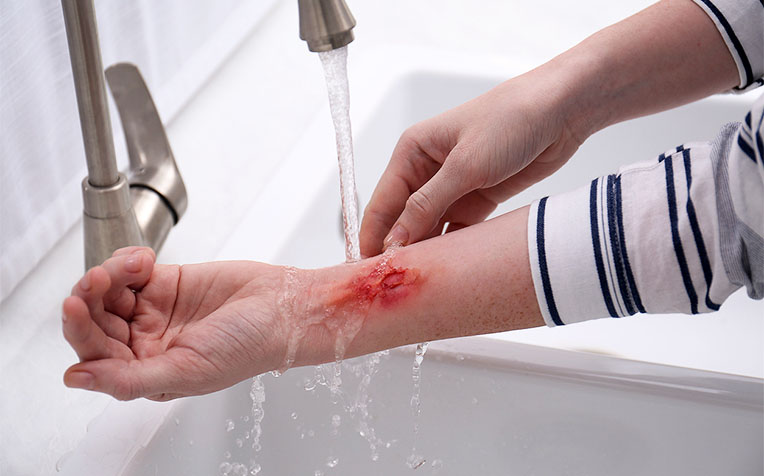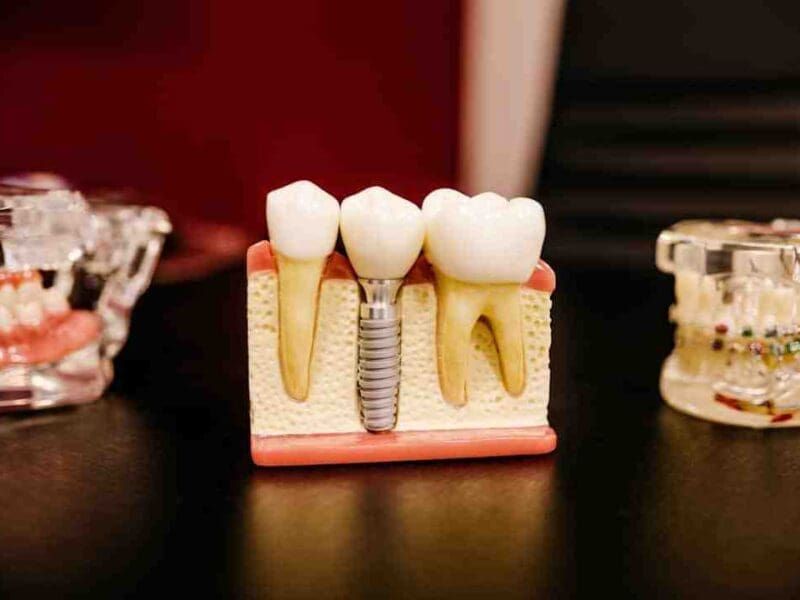
The Best Burn Treatment for First, Second & Third-degree Burns
Experiencing a burn can be a painful and distressing situation, regardless of its severity. Burns are injuries that damage the skin’s tissues due to heat, chemicals, electricity, or radiation. They are categorized into three degrees based on their severity, each requiring a different approach to treatment and care. In this article, we’ll delve into the best treatment for skin burns, focusing on promoting effective healing and minimizing complications. Additionally, we’ll debunk common myths surrounding burn care.
Understanding Different Degrees of Burns
Before diving into burn treatment, it’s crucial to understand the distinctions between first, second, and third-degree burns.
First-degree burns affect the outermost layer of skin and are often characterized by redness, pain, and minor swelling. They can usually be treated at home.
Second-degree burns penetrate deeper, affecting both the outer layer and the layer beneath. Blisters, intense pain, and potential scarring are common with these burns.
Third-degree burns are the most severe, damaging all layers of the skin and potentially underlying tissues. These burns can result in numbness due to nerve damage and require immediate medical attention.
Immediate Steps After a Burn
When a burn occurs, quick action can significantly impact the healing process. Cooling the burn with cold, running water for at least 10 minutes helps to reduce pain and prevent further tissue damage. However, it’s important to avoid using ice or home remedies like butter or toothpaste, as these can worsen the burn.
Treating First-degree Burns
For first-degree burns, which are relatively mild, treatments can often be managed at home. Topical antibiotic ointments help prevent infection, while natural remedies like aloe vera and cooling gels provide soothing relief. Over-the-counter pain medications can also alleviate discomfort.
Managing Second-degree Burns
Second-degree burns require more comprehensive care. Begin by gently cleaning the wound with mild soap and water, then apply a non-stick dressing. Antiseptic creams aid in infection prevention, while prescription burn creams containing silver sulfadiazine promote healing.
Addressing Third-degree Burns
Third-degree burns are critical injuries demanding immediate medical attention. Recognizing the severity and seeking prompt treatment is vital. Skin grafting, where healthy skin is transplanted to the burn site, is a common procedure for these burns. Additionally, specialized treatments like hydrotherapy and debridement may be necessary.
Natural Remedies for Burn Healing
While medical treatments are essential, several natural remedies can complement the healing process. Honey offers antibacterial properties and aids in tissue regeneration. Lavender oil is known for its analgesic and anti-inflammatory effects. Meanwhile, coconut oil serves as an effective moisturizer that prevents excessive scarring.
Professional Medical Interventions
In more severe cases, medical professionals may employ advanced interventions. Hydrogel dressings create a moist environment that promotes healing and reduces pain. Enzymatic debriding agents help remove dead tissue, facilitating the growth of healthy skin. Hyperbaric oxygen therapy increases oxygen levels in the body, accelerating the healing process.
Preventing Infections and Complications
Avoiding infection is paramount in burn healing. Keeping the burn clean and dry is essential, and recognizing signs of infection is crucial. Adequate nutrition supports the body’s healing abilities, so maintaining a balanced diet is important.
Scarring and Scar Management
Scarring is a common concern after burns and types of burns. Silicone gel sheets can flatten and fade scars by hydrating the skin. In more severe cases, laser therapy can minimize scar tissue and improve skin texture.
Long-term Care and Follow-up
The journey to complete burn recovery extends beyond initial treatment. Sun protection is vital for healing skin, as it is more susceptible to damage. Physical therapy aids in maintaining mobility, and seeking psychological support helps individuals cope with the emotional aftermath.
Dealing with Burns in Special Cases
Special considerations are necessary when treating burns in certain populations. Children, elderly individuals, and pregnant individuals require tailored approaches to ensure optimal healing and prevent complications.
Myths and Misconceptions about Burn Treatment
Several myths surround burn treatment, such as applying butter or toothpaste to burns. These remedies can actually exacerbate the injury and hinder healing. Additionally, exposing burns to air does not necessarily speed up the healing process; in fact, it can increase the risk of infection.
FAQs about treating burns
Can I put ice on a burn?
Applying ice directly to a burn can further damage the skin. Instead, use cool running water to gently cool the burn.
When should I seek medical help for a burn?
Seek medical attention for burns larger than a quarter, burns on the face, hands, feet, or genitals, and burns accompanied by severe pain or signs of infection.
How long does it take for a burn to heal?
The healing time varies depending on the burn’s severity. Superficial burns might heal within a week, while deeper burns can take several weeks or months.
Are there any home remedies that work for burns?
While some natural remedies can aid in burn healing, it’s best to consult a medical professional for proper treatment, especially for severe burns.
What should I avoid doing if I have a burn?
Avoid using butter, toothpaste, or adhesive bandages on burns, as these can worsen the injury. Additionally, exposing burns to unclean environments should be avoided to prevent infection.
The bottom line on treating first to third-degree burns
Not all burn treatments are the same, nor effective for healing minor to severe burns. Whether first, second, or a third-degree burn, you should opt for the best burn treatment. Unlike oral antibiotics or less effective home remedies, Vitastem Ultra’s topical antibiotic spray is known to work wonders on treating burns of all types and severity. If you or a loved one is suffering from a burn, you should look into Vitastem as an effective treatment option and/or ask your doctor for advice if this can be a good burn treatment for your condition.







